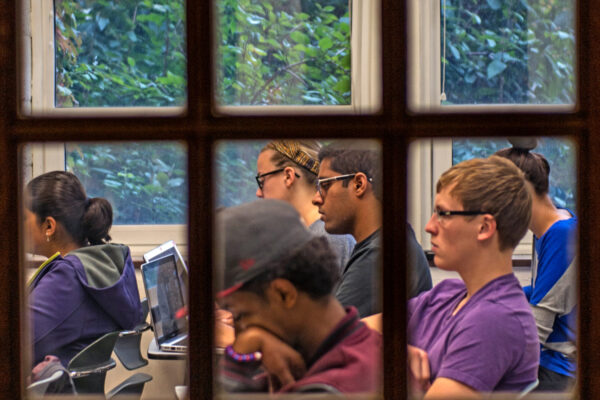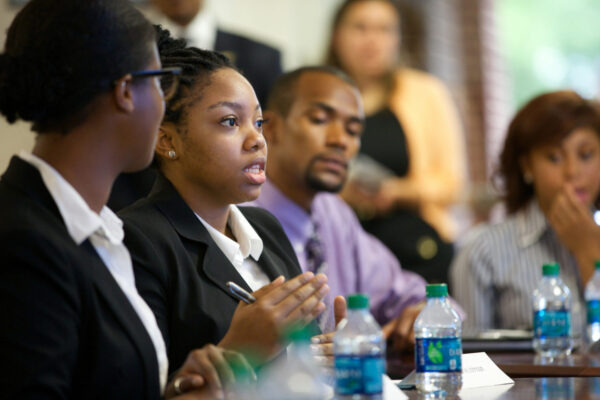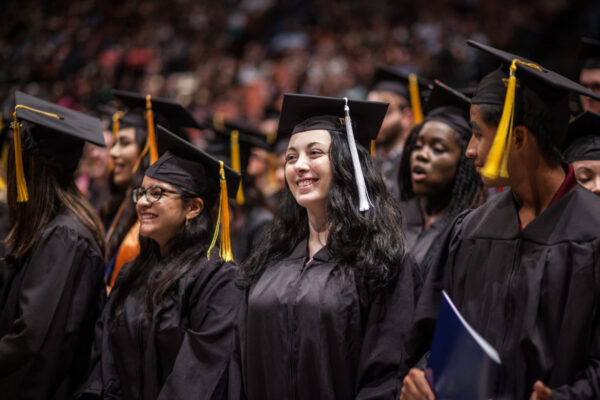ACE2018: How Effective Instruction Maximizes the Impact of Other Student Success Initiatives
By Julie Candio Sekel
How are efforts to improve student outcomes dependent on effective teaching?
This question was central to the session “The Future of Teaching Across American Higher Education” at ACE2018 in Washington, DC on Sunday afternoon, where higher education leaders discussed the relationship between the first-year experience, the use of high-impact practices, career readiness, and the quality of classroom instruction.
The common thread uniting these speakers was their shared belief that faculty preparation in the foundations of effective instruction is critical to the overall student success agenda and to the particular work they have prioritized at their institutions and associations.

George L. Mehaffy approached this discussion through the lens of the first-year experience. As vice president for academic leadership and change at the American Association of State Colleges and Universities (AASCU), Mehaffy is passionate about AASCU’s Re-Imagining the First Year (RFY) initiative to improve the quality of learning for first-year students. But, after looking collectively at the impressive accomplishments of the 44 RFY institutions over the past two years, Mehaffy shared with attendees that a gap was evident.
“As we looked at it, and looked at what people were doing across this array of institutions, large and small, in all parts of the United States, what we saw was what I describe as the donut hole,” Mehaffy said. “We talked about all of the support stuff, but we didn’t talk about what goes on in the classroom. And if you don’t talk about what goes on in the classroom, the rest frankly doesn’t matter, particularly if you’re concerned about low-income, first-gen students of color. Because those are not students that are floating down the lazy river in an afternoon on an inner tube; they’re off at work or taking care of family. The only place you know you can find them, for certain, is in the classroom.”
Ken O’Donnell, associate vice president of student success program integration and assessment at California State University, Dominguez Hills, expanded the conversation about reaching students—both in the first year and throughout their college careers—by articulating the need for “engaging, visibly relevant pedagogy.” O’Donnell shared the importance of putting learning in real-world context through the use of high-impact practices like internships and learning communities. Yet he acknowledged that with a largely adjunct workforce and increasingly diverse student body, faculty require support to faithfully implement these practices and that institutions need to adapt their culture to focus on student engagement.
“The thing all our adjunct faculty have in common, for the most part, is they haven’t been trained in teaching,” O’Donnell said. “So what we need to do is build a culture that understands engaged learning in terms of its outcomes. It is a high-impact practice not if it conforms to a written policy definition, but it is a high-impact practice if it has a high impact, if you can measure the learning, if you can see the students persist, if you can see the gaps close. So it’s a largely assessment-driven cultural change for the sake of faculty. And that’s where online professional development tools, to me, seem indispensable.”
Vice President for Development at The Council of Independent Colleges (CIC) David Brailow offered one example of how CIC is fulfilling its mission to advance educational quality at its member institutions. The new CIC Consortium for Instructional Excellence and Career Guidance, supported by Strada Education Network and developed in collaboration with the Association of College and University Educators (ACUE), equips faculty with the skills to help students become career ready. This work is so important, Brailow asserted, because it extends career advisors’ efforts into the classroom and creates a more holistic approach to supporting students in career preparation.
“This is not to replace the work of career centers,” Brailow explained. “This is to enhance the role of the faculty so they can become better partners to the career placement arm of the institution . . .The evidence is very clear, evidence that Strada has gathered with the help of Gallup, that even when it comes to discussing their career options, it is faculty that students talk to.”
Penny MacCormack, chief academic officer at the Association of College and University Educators (ACUE) and moderator of this panel discussion, described how ACUE partners with individual institutions and associations, like CIC, to prepare and credential faculty in the evidence-based practices that drive student engagement, motivation, and learning. She presented some of the impact data ACUE has collected, which show that faculty find ACUE’s program relevant, are implementing new instructional strategies, and are achieving higher marks on student course evaluations. These findings suggest that faculty welcome the opportunity to receive pedagogical support and that students benefit significantly from their instructors’ use of effective teaching approaches.
So what does work like ACUE’s mean for other success initiatives aimed at improving student outcomes?
As MacCormack concluded, “The ability for faculty to deliver evidence-based practices in their classrooms is actually the driver needed for many of these interventions to reach their full potential.”
If you have any questions or comments about this blog post, please contact us.


